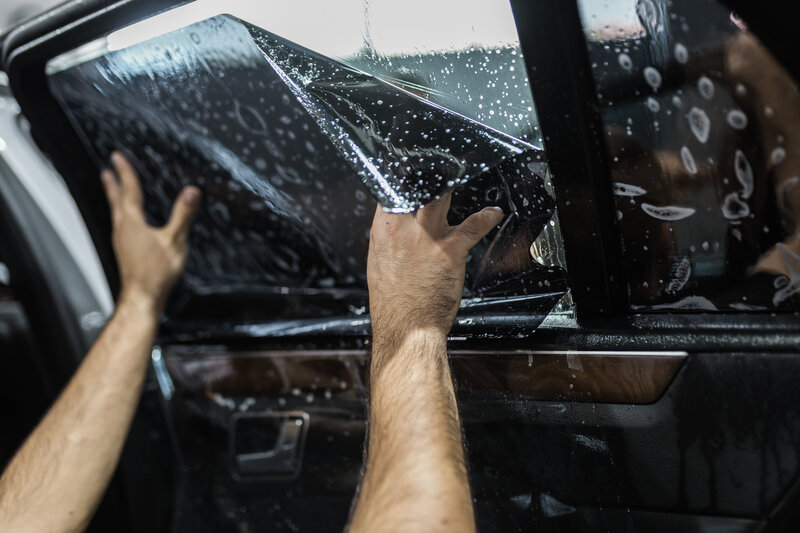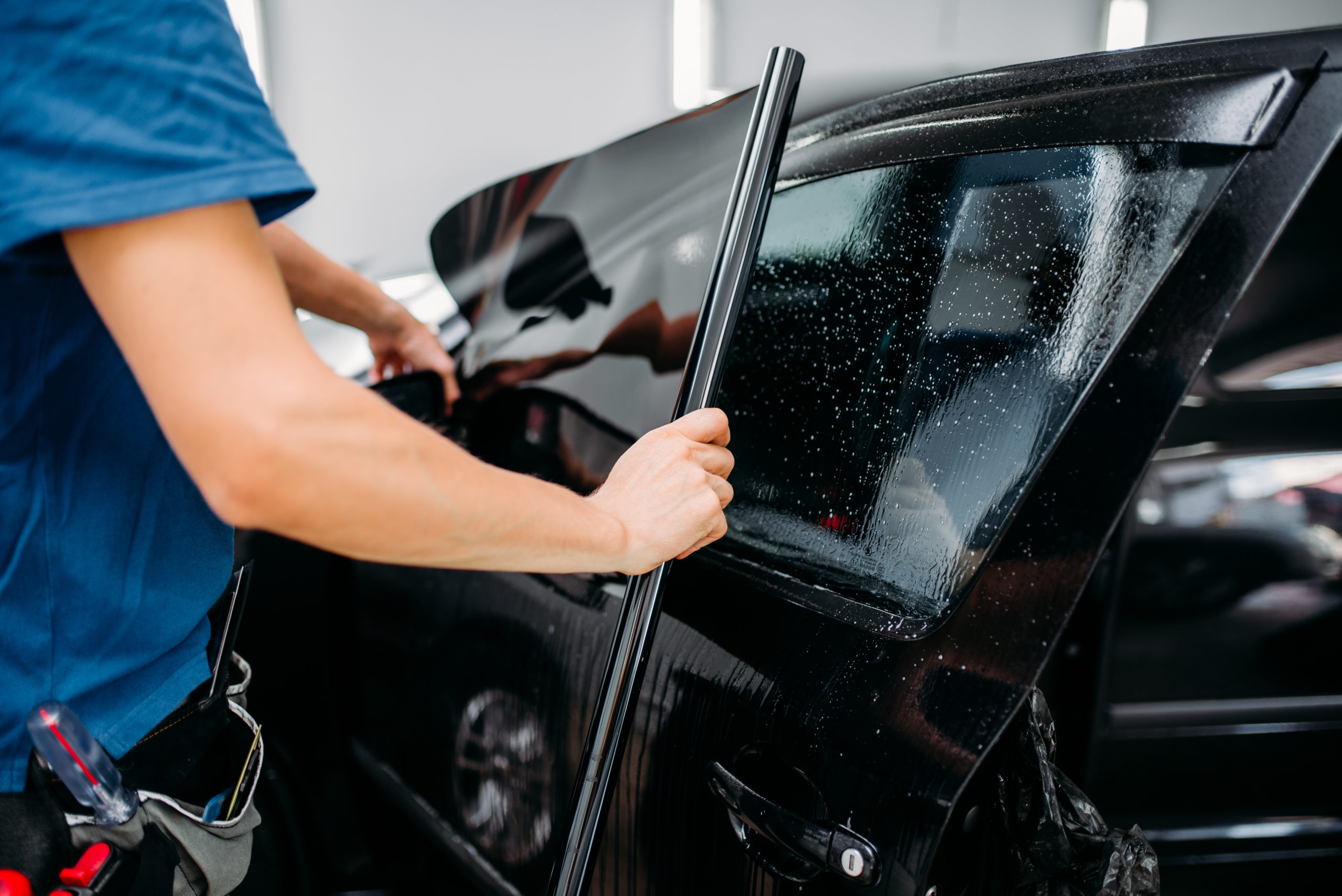Window Tinting Options: Locate the Right Shade for Your Design and Demands
Selecting the appropriate window tint for your lorry entails a cautious consideration of numerous aspects, including individual appearances, practical requirements, and lawful limitations. With options varying from light tintss that offer marginal privacy to darker tones that boost seclusion, the selections can be frustrating.
Comprehending Window Tinting Degrees
When considering window tinting, it is necessary to understand the numerous degrees of tint offered, as they considerably affect both appearances and performance. Window tinting is classified based on Noticeable Light Transmission (VLT) portions, which show the amount of light permitted to pass via the glass. The VLT percent can range from really light (over 70%) to really dark (below 5%)
The main levels of tint include clear, which supplies UV security without altering visibility; light tint (over 50% VLT), which a little minimizes glow while keeping exposure; tool tint (around 35% VLT), striking a balance between personal privacy and light transmission; and dark tint (below 20% VLT), giving significant personal privacy and heat reduction but restricting outside presence.
Understanding these levels is critical as they can affect driving safety and security, legal conformity, and personal comfort. In addition, local guidelines often dictate permitted tint levels, differing by state or municipality. As a result, prior to choosing a color, it is advisable to research study and make certain adherence to these laws while considering personal preferences for design and useful benefits.
Popular Tint Shades Explained

Among the most prominent options is the timeless dark tint, generally varying from 20% to 5% VLT (Visible Light Transmission) This shade provides optimum privacy and a streamlined, sophisticated appearance. It efficiently blocks UV rays and warm, making it excellent for sunny climates, though it may limit visibility at night.
Alternatively, lighter shades such as 35% or 50% VLT offer a more refined look while still using some degree of personal privacy. These shades are ideal for those looking for a balance in between aesthetic appeals and performance, as they permit far better exposure and abide by numerous lawful standards.
An additional arising preference is the ceramic tint, which can be available in a variety of tones - window tinting. It provides exceptional warmth being rejected and UV protection without significantly modifying the automobile's look

Legal Regulations for Window Tinting
Comprehending the legal regulations bordering window tinting is important for automobile owners seeking to customize their automobiles. Each state in the U.S. has certain regulations governing the darkness or agility of window tintss, often measured by Visible Light Transmission (VLT) percentage. VLT describes the amount of light that can go through the glass and the film combined.
In several states, regulations determine various VLT portions for different windowss, including front windshields, side windowss, and back windowss. For circumstances, some states might permit a color of 70% VLT for windscreens while allowing darker tintss for rear windowss. Additionally, specific states have limitations on reflective tintss, which can create glare for various other chauffeurs.
Failing to follow these policies can bring about fines, mandated removal of the tint, and enhanced insurance premiums. Automobile owners need to consult neighborhood legislations or state DMV websites to guarantee they are within legal limits prior to proceeding with installment. Comprehending these regulations not just helps prevent legal consequences but additionally makes certain a risk-free driving experience.
Benefits of Different Tint Materials
Exploring the advantages of numerous tint materials discloses substantial advantages that can improve both the performance and aesthetic charm of a vehicle. Each material offers distinct attributes fit to details demands and choices.
Dyeded window films are preferred blog for their price and capability to lower glow. Metalized films, on the various other hand, offer remarkable heat reduction and UV security due to their reflective residential properties.
Ceramic window films stand for a premium alternative, giving remarkable warmth useful source being rejected while maintaining exposure. They are non-metallic, thus staying clear of any signal disruption, and are highly durable, standing up to scrapes and fading gradually. Furthermore, ceramic films do not consist of dyes, guaranteeing a longer-lasting look.
Lastly, crossbreed films incorporate aspects from dyeded and metalized choices, providing a well balanced performance in terms of warmth being rejected, glow decrease, and cost. Each tint product offers special purposes, permitting automobile proprietors to select the most effective suitable for their lifestyle and aesthetic choices, eventually improving their driving experience.
Selecting the Right Tint for You
Locating the right window tint includes taking into consideration different elements, including personal preferences, lorry kind, and local policies. Analyze your individual design and preferred degree of personal privacy, as these will certainly direct your option of tint shade. Darker tintss provide enhanced personal privacy however may not appropriate for all chauffeurs, especially those who favor a more open feeling inside their lorry.
Following, consider your car type, as the shapes and size of windowss can affect the efficiency of particular tintss. Larger windowss might profit from reflective tintss that lower glare while smaller windowss might be more fit to dyeded films that supply refined appearances.
In addition, it's essential to check neighborhood guidelines relating to window tinting. Several states enforce restrictions on the permitted darkness and reflectivity, especially for front windowss. Conformity with these regulations is necessary to prevent fines and guarantee safety and security.
Finally, assess the tint product that ideal suits your requirements. Options include dyeded, metalized, ceramic, and crossbreed films, each offering special More Info advantages relating to warm rejection, UV security, and durability. By considering these elements, you can confidently pick a window tint that straightens with your style and practical needs.
Verdict
To conclude, selecting the ideal window tint needs mindful consideration of numerous elements, consisting of VLT portions, neighborhood regulations, and the wanted aesthetic. Different tint materials provide distinct benefits that can enhance car comfort and security. By completely understanding the available alternatives and aligning them with sensible needs and private choices, one can accomplish an optimal balance in between design and performance in window tinting selections.
Choosing the proper window tint for your car includes a careful consideration of various elements, including personal appearances, useful needs, and lawful restrictions. Each state in the U.S. has specific regulations governing the darkness or agility of window tintss, usually determined by Visible Light Transmission (VLT) percentage. Some states might allow a color of 70% VLT for windshields while permitting darker tintss for rear windowss.Finding the right window tint entails considering numerous factors, including individual choices, car type, and local laws.In final thought, selecting the appropriate window tint needs mindful consideration of different aspects, including VLT portions, regional laws, and the desired aesthetic.